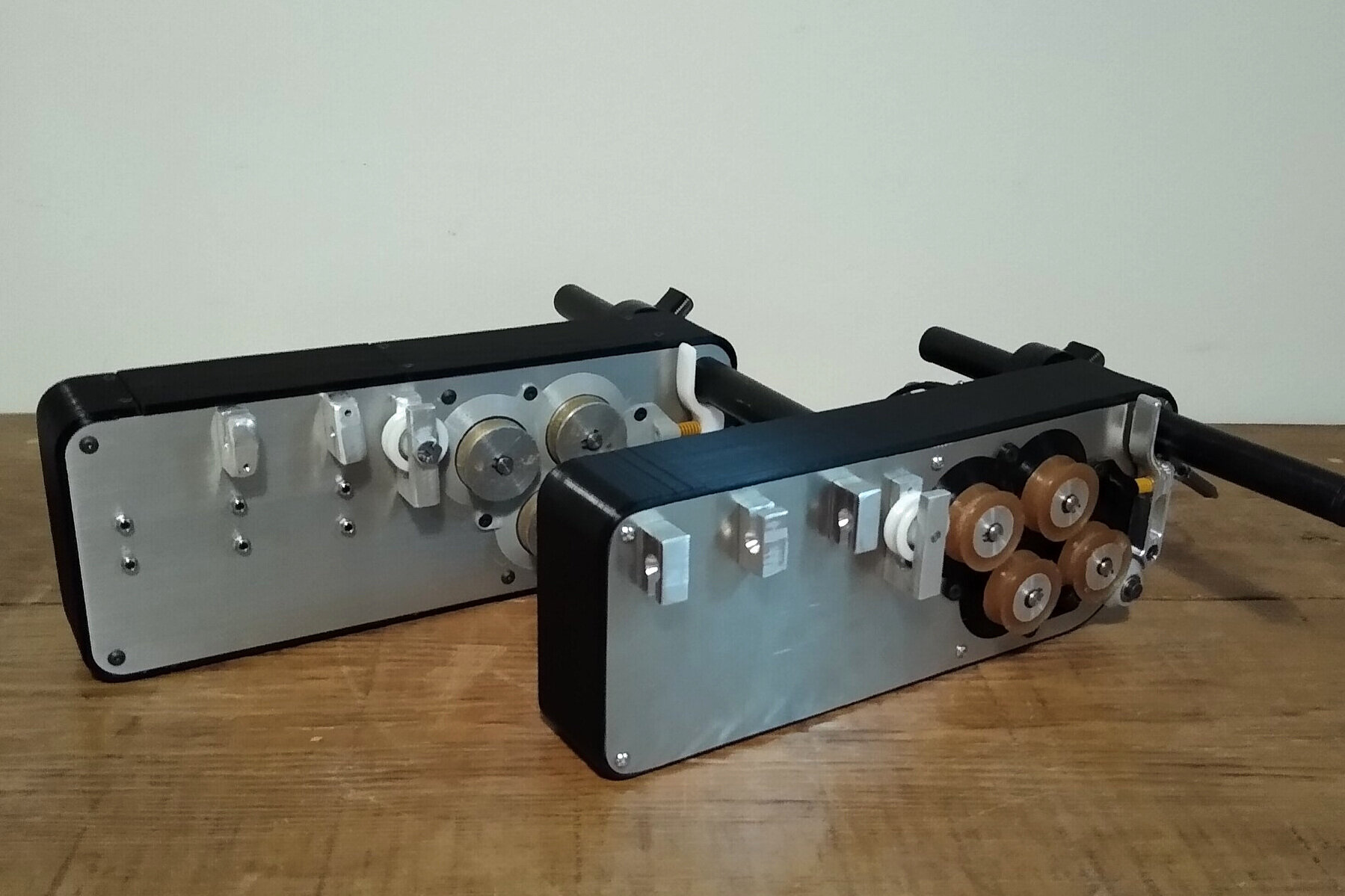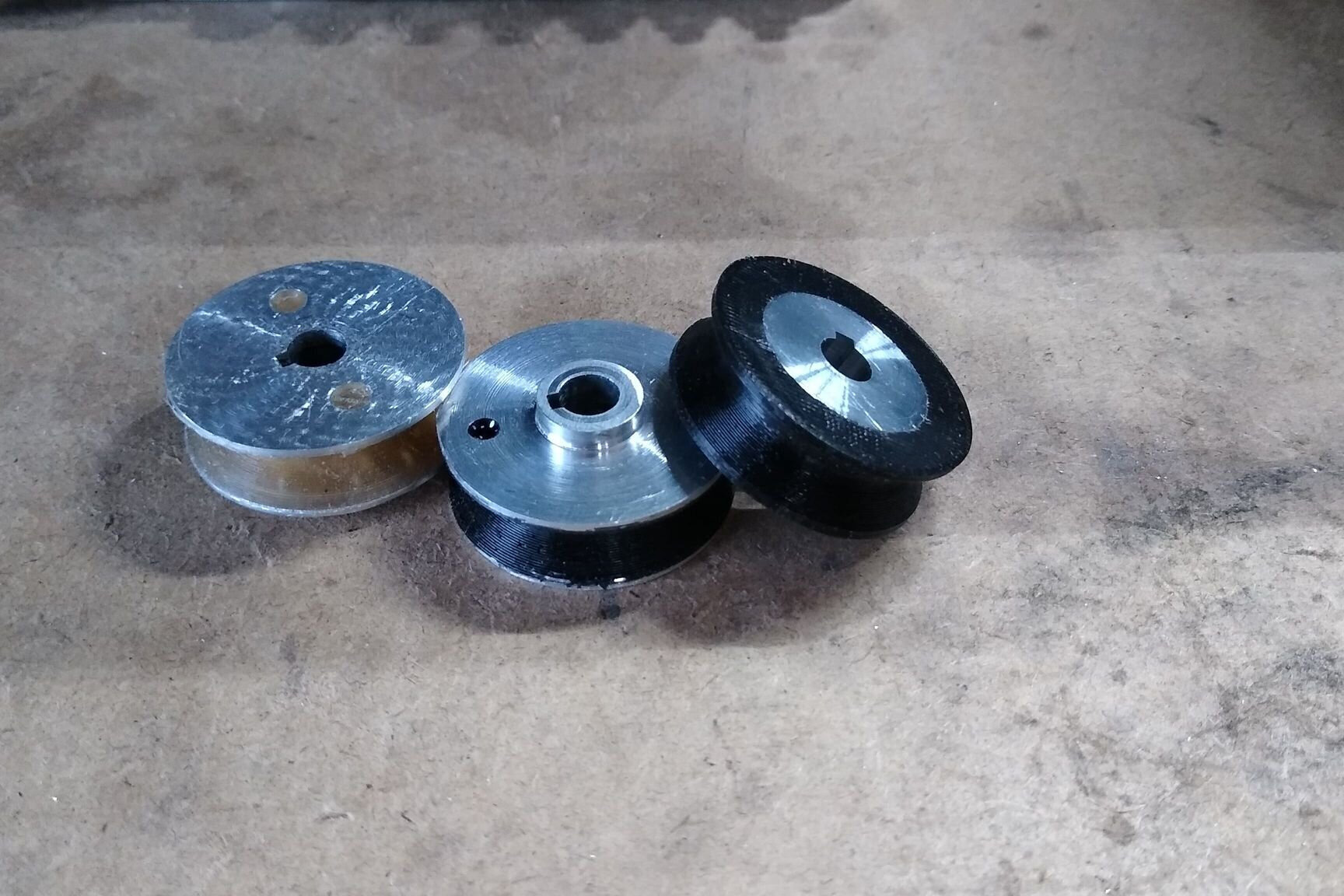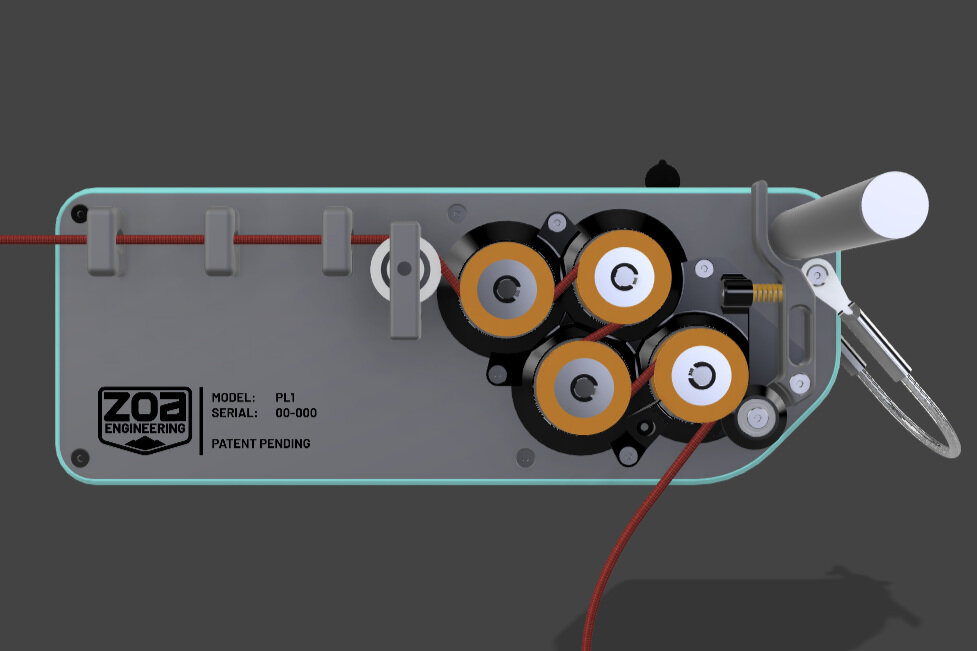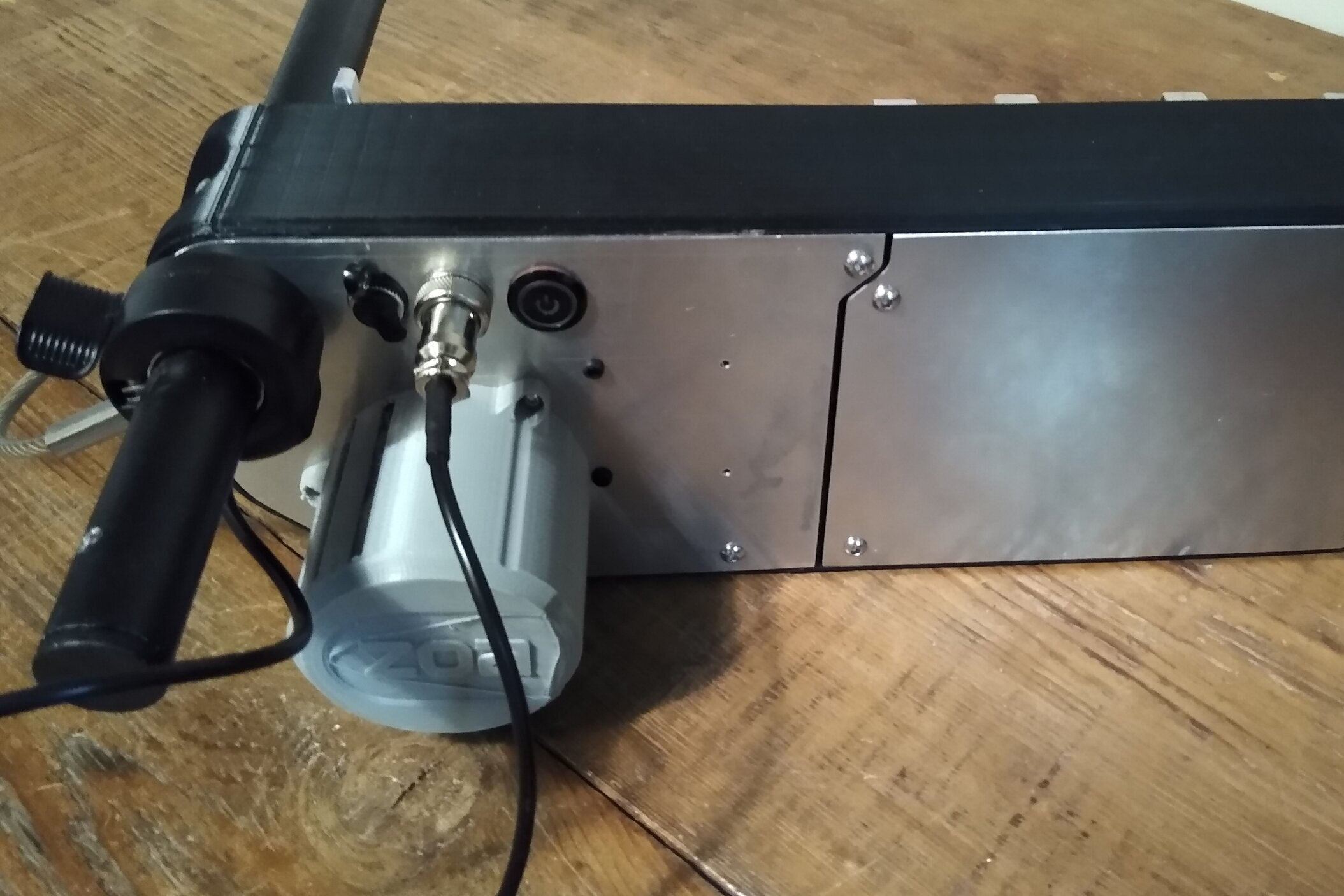Happy New Year everyone!
I know it’s been a while since our last update, but we’ve been hard at work, and have lots to share.
We have been out testing fairly regularly since we’ve had decent snow coverage in the local mountains. Each time we go out we learn something new and try to use that to improve the reliability and performance of the product.
Pulleys
While testing in December the prototype PL1 started to burn through paracord on slopes where it really shouldn’t have had any issues. We immediately saw that the urethane on the second drive pulley had worn down to a point where it had split and separated itself from the aluminum core.
My first reaction to the issue was to switch to a harder urethane, that would hopefully be more wear resistant. Unfortunately the new urethane also had less grip. When testing with the newly cast pulleys the rope would slip at lower loads, causing it to burn through ropes and ultimately causing just as much wear as what we saw previously.
It’s worth mentioning that during operation, the load on each drive pulley is not equal. The tension on the rope is reduced as it makes its way around each pulley, which allows it to be gripped relatively lightly by the pressure wheel on the last pulley. The first pulley had a very small wrap angle, which meant that most of the tension was being held by the second pulley in the system, which is the one that saw the most wear and ultimately failed.
The next change we made to address this issue was to increase the wrap angle of the first pulley by shifting the rope guides up and adding an idler before the drive pulleys. This change further increases the grip of the device and spreads the load more evenly between the first two pulleys. So far this change has worked well, but we’re going to keep monitoring pulley wear and experimenting with different urethane as we move forward.
Setup
Aside from learning how to break the PL1, an important part of field testing is learning how best use the product. One of the first things I learned while testing, is that as a skier, riding up with the line ejecting between your legs is the easiest way to avoid accidentally dragging the line up the hill with you.
Another piece of wisdom we’ve gained is that using multiple sections of rope during your ascent is often preferable to one long line. It is a little faster to set up a single line, but there are some important advantages to using multiple lines for your ascent:
-
Using multiple ropes allows you to establish more efficient and versatile tracks
-
Longer lengths of rope will stretch more, making them more susceptible to abrasion
-
In the event of a rope failure, a small section is easier to skin back up for cleanup or to potentially repair or replace that section
Heat
I cut my last outing a little short after the prototype cut out due to overheating. After cooling down for a minute or two the device was able to finish pulling me up the hill. This wasn’t a huge surprise for a couple reasons:
-
It was the first prolonged testing I had done with a fully sealed enclosure
-
The prototype being used for testing didn’t feature the same heatsinking or internal layout used in the current frame design
While there are already differences in the latest design that should help with this problem, I have also improved the motor enclosure design to provide additional cooling.
Beta Testing
There has already been a fair amount of interest in beta testing and we are grateful for that! I apologize that we are running behind schedule for a beta launch. We have a number of sources lined up for parts, but we want to get a bit more time on the alpha prototypes before pulling the trigger on an order.
We will provide more details on how we plan to proceed with beta testing, in the next update.
